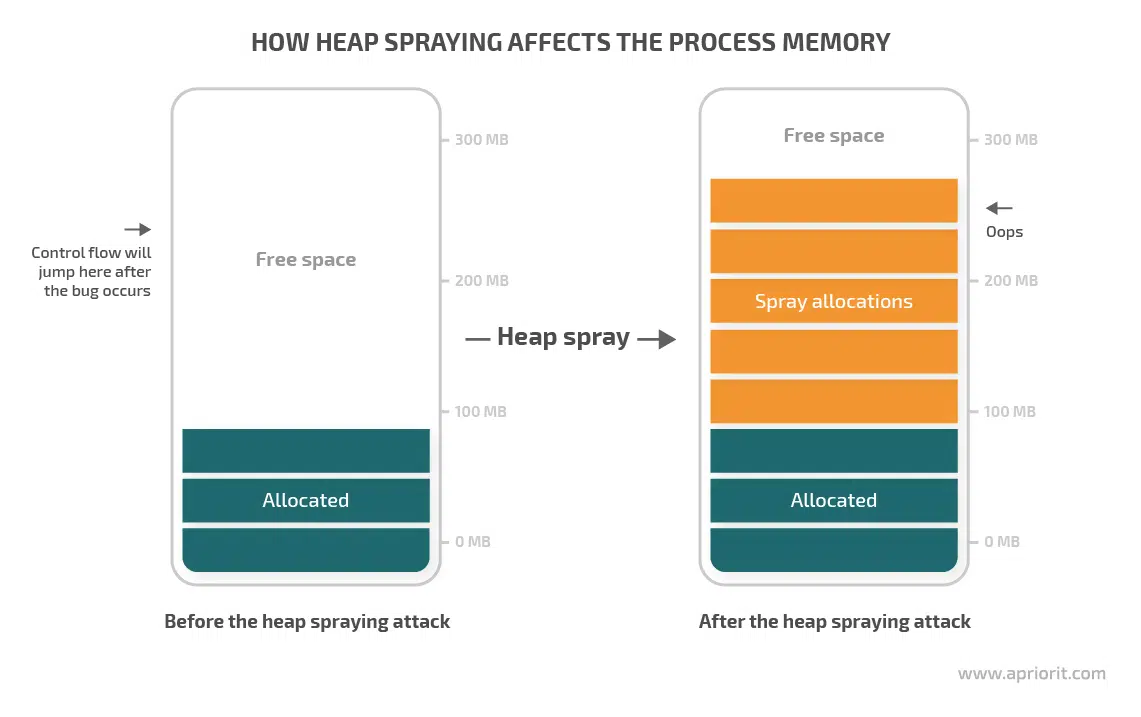Heap spray is a type of computer security attack that exploits memory allocating functions in computer programming to execute malicious code. It is most commonly used in buffer overflow attacks, but can also be used to facilitate other attack strategies, including code injection and buffer super-packing. The attacker uses heap spray to insert a large number of identical copies of malicious code into the memory of a computer system. This means that if an attacker can find a way to execute any code in the system, the malicious code will already be present in the memory and can be easily accessed and executed.
In practical terms, this involves the attacker using a variety of methods to fill the available memory space with the malicious code. This includes using buffer overflows, writing the malicious code directly into memory or using specially designed techniques to manipulate programs or libraries to write the malicious code into the memory. The use of heap spraying allows the attacker to increase the chances of successful code execution and reduce the time needed for the attack to succeed.
Heap spraying is considered a powerful attack technique as it enables the attacker to easily deposit code fragments into arbitrary memory locations without a known memory layout. This means that even if security software is in place to detect a buffer overflow attack, the malicious code may already be present, leaving the system vulnerable to further exploitation. Therefore, it is important for computer security professionals to be aware of the threat posed by heap spray attacks and to employ suitable countermeasures such as memory protection and buffer overflow protection.






